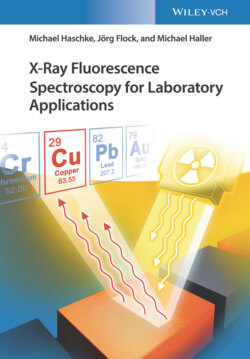Читать книгу X-Ray Fluorescence Spectroscopy for Laboratory Applications - Michael Haschke, Jörg Flock - Страница 40
3.4.4 Preparation of the Sample by Fusion Beads 3.4.4.1 Improving the Quality of the Analysis
ОглавлениеThe manufacturing of pressed pellets is fast and relatively easy; however, there still can be effects that influence the analytical accuracy, for example,
grain size effects
mineralogical effects
preferential orientations
surface roughness and
segregations of the material.
The elimination of these effects is possible by the manufacturing of fusion beads. This type of sample preparation also results in a standardization of the matrix, since a considerable dilution of the sample material by the melting agent takes place. As a result, calibrations can be used for a wider range of sample qualities, which also means less reference samples are required for a standard-based calibration. Further, calibration samples can be produced synthetically from pure substances in the form of fusion beads, so that their traceability is possible. The influence that the preparation of the material has on the analytical accuracy is demonstrated in Figure 3.12, which shows the calibration curve for pressed pellets and fusion beads.
Figure 3.12 Calibration curves for the same powder material prepared as pressed pellet (a) and fusion bead (b).
The following materials are required for the manufacturing of fusion beads:
Crucible (platinum/gold 95/5)
Chill molds (platinum/gold 95/5), nickel discs
Cover for the molds (platinum/gold 95/5)
Stirring bar (e.g. platinum/gold 95/5)
Muffle furnace
Fully or partially automated fusion machine heated inductively or with burners
The disadvantages of manufacturing fusion beads are the relatively long processing times, the higher costs, and the dilution of the sample materials, since this often leads to a reduction in the detection limits.
